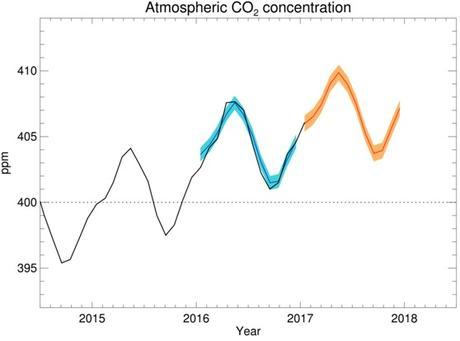
© Phil Pickin
The Met Office forecast for the concentration of atmospheric carbon dioxide in 2017 suggests that the increase in atmospheric carbon dioxide over the year will be smaller than the rise seen in 2016 – which was the largest annual increase in the 50-year record.However, carbon dioxide levels are still expected to rise by more than the average for the last decade.The forecast applies specifically to the Mauna Loa Observatory in Hawaii, and follows a successful forecast of 2016 CO2 concentrations produced by the Met Office Hadley Centre, in conjunction with the Scripps Institution of Oceanography, which has been measuring CO2 at Mauna Loa routinely since 1958.The Met Office’s Professor Richard Betts, who leads the production of the CO2 forecast, said: “The rise in atmospheric carbon dioxide last year was the largest seen in the 50-year Mauna Loa record. Our forecast correctly predicted that 2016 would also be the first year in the record where the concentration of atmospheric carbon dioxide wouldn’t dip below 400 parts per million (ppm).“For 2017 we are forecasting a rise of around 2.5 ppm, smaller than the 3.4 ppm rise between 2015 and 2016, but this is still a higher figure than the average over the last decade.”

